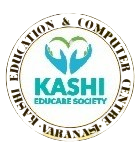A Python Computer Course focuses on teaching the fundamentals and advanced concepts of Python programming language. Python is a versatile, high-level programming language used in web development, data science, automation, artificial intelligence, and more. The course is designed for beginners to intermediate learners and covers everything from the basics to more advanced Python concepts.
Here’s a typical Python Computer Course Content outline:
1. Introduction to Python
- What is Python?
- Introduction to Python programming language
- History of Python and its versions (Python 2 vs Python 3)
- Features and advantages of Python (easy syntax, portability, community support)
- Applications of Python (Web Development, Data Science, Machine Learning, etc.)
- Installing Python:
- Installing Python on different operating systems (Windows, Mac, Linux)
- Python IDEs (Integrated Development Environments) – IDLE, PyCharm, VS Code
- Introduction to Python shell and writing simple Python scripts
2. Basic Python Syntax and Data Types
- Python Syntax:
- Writing your first Python program
- Indentation in Python (importance of spaces and tabs)
- Comments in Python (single-line, multi-line comments)
- Data Types in Python:
- Numbers (integers, floats, complex numbers)
- Strings (declaring, indexing, slicing, string operations)
- Lists (creating lists, accessing elements, list methods)
- Tuples (immutability, tuple operations)
- Dictionaries (key-value pairs, dictionary methods)
- Sets (creating sets, set operations)
- Type Conversion:
- Implicit and explicit type conversion (casting data types)
- Converting between different data types (str, int, float, etc.)
3. Control Structures
- Conditional Statements:
- if, else, and elif statements
- Nested if statements
- Loops:
- while loop
- for loop
- Loop control statements: break, continue, pass
- List comprehensions (using loops in a concise manner)
4. Functions and Modules
- Functions:
- Defining functions in Python (def keyword)
- Function arguments (default, keyword, and arbitrary arguments)
- Return values from functions
- Lambda functions (anonymous functions)
- Recursion in Python
- Modules and Packages:
- Importing modules (standard and custom modules)
- Python standard library overview (math, os, sys, random)
- Creating and organizing packages
- Using third-party modules with
pip(e.g., NumPy, requests)
5. Object-Oriented Programming (OOP) in Python
- Introduction to OOP:
- What is Object-Oriented Programming?
- Classes and Objects (creating classes, creating objects)
- Instance and class variables
- Methods (defining methods, self parameter)
- OOP Concepts:
- Encapsulation (hiding internal details)
- Inheritance (inheriting from another class, method overriding)
- Polymorphism (method overloading, method overriding)
- Abstraction (abstract classes, methods)
- Constructor and Destructor methods (
__init__,__del__)
- Class Inheritance and Multiple Inheritance:
- Overriding methods in subclasses
- Using
super()to access parent class methods
6. Error Handling and Exception Management
- Exception Handling:
- What are exceptions in Python?
- Try, except, else, and finally blocks
- Handling multiple exceptions
- Raising exceptions (
raisekeyword)
- Custom Exceptions:
- Defining custom exception classes
- Using custom exceptions in your code
7. File Handling
- Reading Files:
- Opening files in Python (
open()function) - Reading files using different modes (read, write, append)
- Reading file content (
read(),readline(),readlines())
- Opening files in Python (
- Writing to Files:
- Writing data to files (
write(),writelines()) - Working with text and binary files
- Writing data to files (
- File Operations:
- File closing and flushing
- File handling methods (seek, tell, rename, delete, etc.)
- Working with Directories:
- Using
osandshutilmodules for directory operations - Creating, deleting, and listing files and directories
- Using
8. Working with Libraries and Frameworks
- NumPy:
- Introduction to NumPy and array handling
- NumPy arrays and array operations
- Mathematical operations with NumPy
- Pandas:
- Introduction to Pandas DataFrames
- Data manipulation (sorting, filtering, grouping, merging)
- Data import and export (CSV, Excel, SQL, JSON)
- Matplotlib and Seaborn:
- Data visualization with Matplotlib
- Creating line charts, bar charts, histograms
- Customizing plots (labels, titles, legends)
- Requests:
- Making HTTP requests with
requestslibrary - Handling APIs and web scraping
- Making HTTP requests with
9. Advanced Python Concepts
- Decorators:
- What are decorators?
- Creating and using decorators in Python
- Generators and Iterators:
- Introduction to generators and yield statement
- Using iterators in Python
- Context Managers:
- Using
withstatement for resource management - Writing custom context managers using
__enter__and__exit__
- Using
10. Web Development with Python
- Introduction to Web Development:
- Basics of web applications and HTTP
- Introduction to Flask/Django (Lightweight web frameworks in Python)
- Flask Web Development:
- Setting up Flask application
- Routing, templates, and handling forms
- Working with databases (SQLite, MySQL, or PostgreSQL)
- Django Web Framework:
- Introduction to Django (Model-View-Template architecture)
- Setting up and managing Django projects
- Creating Django views, templates, and models
- Django admin panel and database migrations
11. Data Science and Machine Learning (Optional)
- Introduction to Data Science with Python:
- Overview of data science process (data collection, cleaning, analysis)
- Using Pandas for data manipulation and cleaning
- Exploratory Data Analysis (EDA) and data visualization
- Machine Learning Basics:
- Introduction to Machine Learning and types of learning (Supervised, Unsupervised)
- Scikit-learn library for machine learning
- Implementing algorithms like Linear Regression, Classification, Clustering
- Model evaluation techniques (Cross-validation, Confusion Matrix)
12. Final Project and Hands-on Experience
- Final Project:
- Developing a Python application that incorporates various concepts learned (e.g., web app, data analysis tool, automation script)
- Code Review and Debugging:
- Best practices for writing clean, efficient, and readable code
- Code debugging and error handling techniques
- Version control with Git and GitHub
